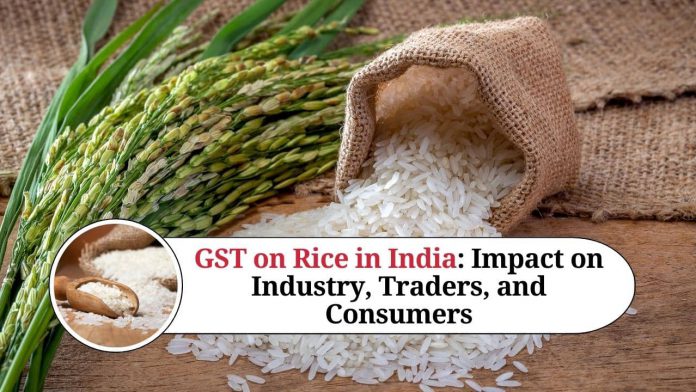Introduction:
Goods and Services Tax (GST) is a comprehensive tax system implemented in India since July 2017. It is an indirect tax that replaces all the previous taxes, such as VAT, Excise Duty, and Service Tax. Under the GST system, all goods and services are taxed based on a common tax rate. One such essential commodity that falls under the GST regime is rice.
GST on Rice:
Rice is an essential commodity consumed by millions of people in India. Before the implementation of GST, rice was subject to various taxes, such as VAT, excise duty, and octroi. However, with the implementation of GST, rice is now taxed under a unified tax rate, which is 5%.
Under the GST, rice is classified under the HSN (Harmonized System of Nomenclature) code 1006. This code includes all types of rice, including basmati, non-basmati, paddy, broken rice, and parboiled rice. The 5% GST rate is applicable to all these varieties of rice.
Impact of GST on Rice:
The implementation of GST has had a significant impact on the rice industry. Before the GST, the rice industry faced a lot of challenges due to the multiple taxes levied on it. This led to an increase in the price of rice and made it difficult for the common man to afford it. However, with the implementation of GST, the cost of rice has come down, making it more affordable.
Another benefit of the GST is that it has brought more transparency and simplicity in the taxation system. Previously, the rice industry had to deal with a lot of paperwork and procedures that were time-consuming and cumbersome. With GST, the process of tax filing has become more straightforward and hassle-free.
Impact on Rice Traders:
The implementation of GST has also had a significant impact on the rice traders in India. Before the GST, traders had to deal with a lot of paperwork and taxes, which made it difficult for them to run their businesses. However, with the implementation of GST, the process of tax filing has become more straightforward and hassle-free.
Under the GST system, traders are required to file monthly, quarterly, or annual returns, depending on the size of their business. This has led to a reduction in the compliance burden for the traders, making it easier for them to focus on their business.
Furthermore, the implementation of GST has also led to the emergence of organized players in the rice industry. With a unified tax rate, the playing field has been levelled, and smaller traders are now competing on an equal footing with larger players. This has led to a more competitive market and ultimately benefitted the consumers.
Impact on Consumers:
The implementation of GST has led to a reduction in the price of rice, making it more affordable for the common man. The reduction in the cost of production and distribution of rice has led to a decrease in the final price of rice, benefiting consumers.
Furthermore, the implementation of GST has also led to the removal of various taxes, such as octroi, which were levied on rice during inter-state transport. This has led to a reduction in the cost of transportation, making it easier for traders to transport rice across state borders. Ultimately, this has led to a more efficient distribution network, which has benefited consumers.
Conclusion:
In conclusion, the implementation of GST has had a positive impact on the rice industry in India. It has simplified the taxation system, made it easier for traders to conduct their business, and reduced the price of rice, making it more affordable for the common man. The emergence of organized players and a more competitive market have also benefitted the industry as a whole. Overall, GST has been a positive step towards the growth and development of the rice industry in India.
Read more useful content:
Frequently Asked Questions (FAQs)
- What is GST?
GST stands for Goods and Services Tax, which is a comprehensive tax system implemented in India since July 2017. It is an indirect tax that replaces all the previous taxes, such as VAT, Excise Duty, and Service Tax.
- What is the GST rate on rice?
Under the GST, rice is taxed at a unified tax rate of 5%.
- What is the HSN code for rice under the GST?
Rice is classified under HSN code 1006 under GST. This code includes all types of rice, including basmati, non-basmati, paddy, broken rice, and parboiled rice.
- How has GST impacted the rice industry?
The implementation of GST has simplified the taxation system, reduced the compliance burden for traders, and made rice more affordable for the common man. It has also led to the emergence of organized players in the industry and a more competitive market.
- How has GST impacted rice traders?
The implementation of GST has made it easier for traders to conduct their business by reducing the compliance burden and simplifying the tax filing process. It has also led to a more competitive market, which has ultimately benefitted the traders.
- How has GST impacted rice consumers?
The implementation of GST has led to a reduction in the price of rice, making it more affordable for the common man. It has also led to a more efficient distribution network, which has benefited consumers.




















